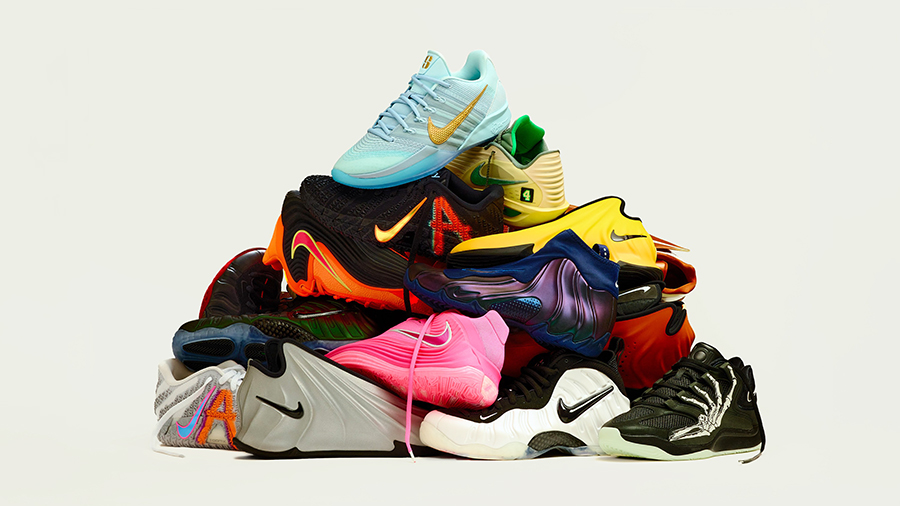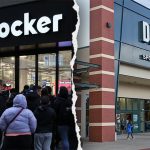S&P Global Ratings lowered its debt ratings on Nike, Inc. due to recent sales and margin declines that it expects will persist in the company’s current fiscal year, as well as ongoing tariff risks.
“The company is undertaking a meaningful turnaround of its merchandising and go-to-market strategies while also addressing higher input costs from tariffs, given that it imports materially to the U.S. from both Vietnam and China,” said S&P in a press release. “As part of its new CEO strategy, Nike discounted heavily to clear out inventory and make room for new products. At the same time, it is trying to offset increased marketing spend with overhead restructuring costs to limit profitability declines.
“We believe it will take multiple years to regain the market share lost to both apparel and footwear competitors and return Nike to historical levels of profitability.”
As a result, S&P lowered its ratings on Nike, including its issuer credit rating on the company, one notch to ‘A+’ from ‘AA-‘. It also lowered our short-term commercial paper ratings on Nike to ‘A-1’ from ‘A-1+’.
The stable outlook reflects S&P’s view of the company’s dominant market share and substantial cash balance, which are expected to withstand near-term profit declines and strategic shifts.
In October 2024, S&P revised its outlook on Nike to negative due to revenue and profitability declines. It subsequently pulled its financial guidance for the fiscal year ending May 2025 and postponed its investor day amid a strategy shift tied to the hiring of Elliott Hill as CEO.
S&P said in its analysis, “The downgrade reflects Nike’s profit deterioration amid a strategy turnaround. Nike’s sizable cash position masks the material underperformance and weakening of the company’s core credit metrics. S&P Global Ratings-adjusted leverage increased modestly to about 0.5x at the end of fiscal 2025 (ended May 31, 2025), from 0.2x in fiscal 2024. This is because, as of year-end fiscal 2025, Nike had $9.2 billion of liquidity, including $7.5 billion of cash and cash equivalents and $1.7 billion of short-term investments that we largely net against debt. In the fourth quarter of fiscal 2025, the company also repaid $1 billion of 2.40 percent notes due 2025.
“Nike is a strong brand and industry leader that had strategy missteps that resulted in lost market share and now a costly turnaround. It pulled annual guidance last year and is only providing quarterly guidance at present. The company is navigating its turnaround after the 2024 departure of CEO John Donahoe, which we viewed as abrupt. Overall, we believe that, holistically, Nike is more in line with ‘A’ category rather than ‘AA’ category U.S. corporate issuers. This is based on scale, performance trajectory, and management’s execution of strategy. We believe Nike is still better positioned than ‘A’ rated Adidas given its larger size and merchandise variety, even with recent setbacks.
“On top of the turnaround, Nike also faces new and meaningful cost headwinds from tariffs, particularly affecting footwear imported into the U.S. For fiscal 2024, factories in Vietnam, Indonesia, and China manufactured approximately 50 percent, 27 percent, and 18 percent of total Nike brand footwear, respectively. Also in fiscal 2024, factories in Vietnam, China, and Cambodia manufactured approximately 28 percent, 16 percent, and 15 percent of total Nike brand apparel, respectively.
“The estimated gross incremental cost increase to Nike due to the new U.S. tariffs is approximately $1 billion. In fiscal 2026, after implementing mitigation actions, the company expects the net financial impact to be about 75 basis points (bps) to gross margin, with a more significant effect in the first half of the year (about 100 bps in first quarter).
“Nike has indicated they intend to fully mitigate the impact of tariff headwinds over time, as it implements and annualizes the actions outlined in the latest earnings call. It is taking multiple steps to manage this exposure, including optimizing sourcing, collaborating with suppliers and retail partners, and evaluating corporate cost reductions. These mitigation actions will be phased in throughout fiscal 2026. It is also reducing its share of U.S. footwear imports from China from 16 percent to the high single-digit percentage range by the end of fiscal 2026. As part of regular seasonal planning, Nike has also implemented a targeted price increase in the U.S., with phased implementation beginning in fall 2025.
“We believe margins could be pressured in the near term as the company executes these mitigation efforts. Furthermore, it is difficult for footwear manufacturers to move their supply chains given the complexity and variety in product mix. In addition, given the persistent inflation and economic uncertainty in the U.S. and other regions, we believe price increases could potentially reduce volumes on discretionary shoes and apparel.
“Nike is taking a variety of steps to turn the business around, and its competitive position in the industry hinges on this being successful. In recent years, Nike has leaned heavily into its lifestyle/fashion business and is now working to rebalance its assortment back into more athletic performance products. The company lost market share in the specialty running category to newer entrants Hoka and OnRunning. Legacy competitors Adidas and New Balance have retained their positions in the lifestyle category. Other competitors, including Skechers, Lululemon, and Deckers, have also recently increased sales while Nike revenues have declined. Furthermore, under its previous CEO, Nike had shifted away from the wholesale channel, and, as part of its turnaround, the company will pivot back to more of an omnichannel approach.
“We are monitoring how CEO Elliott Hill’s new “Win Now” strategic actions, which is prioritized around five priority sports (running, basketball, football, training, and sportswear), three countries (the U.S., China, and the U.K.), and five cities (New York, Los Angeles, London, Beijing, and Shanghai), will spur growth. Nike plans to run a balanced portfolio through men’s, women’s, kids’, sportswear, footwear, apparel, and accessories, and up and down price points. It has been working to clean up its distribution of the oversaturated Air Force 1, Jordan 1, and Dunk models. It is also refreshing the sportswear side of the business with such brands as Vomero 5, P-6000, Shox, SuperFly, Air Max Muse, and Air Max 95. Lastly, we believe the Dick’s Sporting Goods’ acquisition of Foot Locker could help Nike as it restores its presence in the wholesale channel, given its strong relationship with Dick’s.
“Nike’s leading market position, along with its strong balance sheet and cash flow, allows it to withstand this business transformation, but a meaningful improvement in profits will not occur until at least fiscal 2027. Although it recently saw market share declines, Nike holds a leading position in the global athletic apparel and footwear market and is double its next biggest competitor, Adidas, in certain categories. The company’s innovation capabilities and brand equity are industry-leading. Nike has historically generated adjusted free operating cash flow (FOCF) of more than $5 billion annually. However, with the recent weak performance and ongoing strategic initiatives, we expect FOCF will decline to below $4 billion for the next few years. We believe Nike is committed to maintaining strong credit metrics. It has already moderated share repurchases in the near term, given the uncertain environment and impact of Win Now actions on financial results.
“Nike expects first-quarter revenues for fiscal 2026 to be down in the mid-single-digit percentage area compared with the previous year. And it believes gross margin could be down as much as 425 bps. This is largely due to the ongoing liquidation of excess inventory, further reductions in classic footwear franchises (such as Air Force 1, Dunk, and Air Jordan 1), and lower online traffic as Nike Digital is repositioned as a full-price channel. We expect these headwinds will moderate in the second half of the year as the company laps aggressive clearance activity from the previous year. Selling, general, and administrative expenses are expected to increase in the low-single-digit percentage area in fiscal 2026.
“Investments will focus on reigniting growth, especially in demand creation and rebuilding their commercial offense. Nike remains on track to exit the first half of fiscal 2026 with a clean inventory position. We believe margins will continue to improve into 2027 as the company moves past channel recalibration and classic franchise reductions.
“S&P Global Ratings believes there is a high degree of unpredictability around policy implementation by the U.S. administration and responses–specifically with regards to tariffs and the potential effect on economies, supply chains, and credit conditions around the world. As a result, our baseline forecasts carry a significant amount of uncertainty. As situations evolve, we will gauge the macro and credit materiality of potential shifts and reassess our guidance accordingly.
“The stable outlook reflects our view that Nike will maintain leverage below 1.0x over the next 24 months through the variety of merchandising, marketing, and digital efforts it is using to improve both the business and the S&P adjusted EBITDA margin toward its historical high-teens percentage level.”
Image courtesy Nike
















